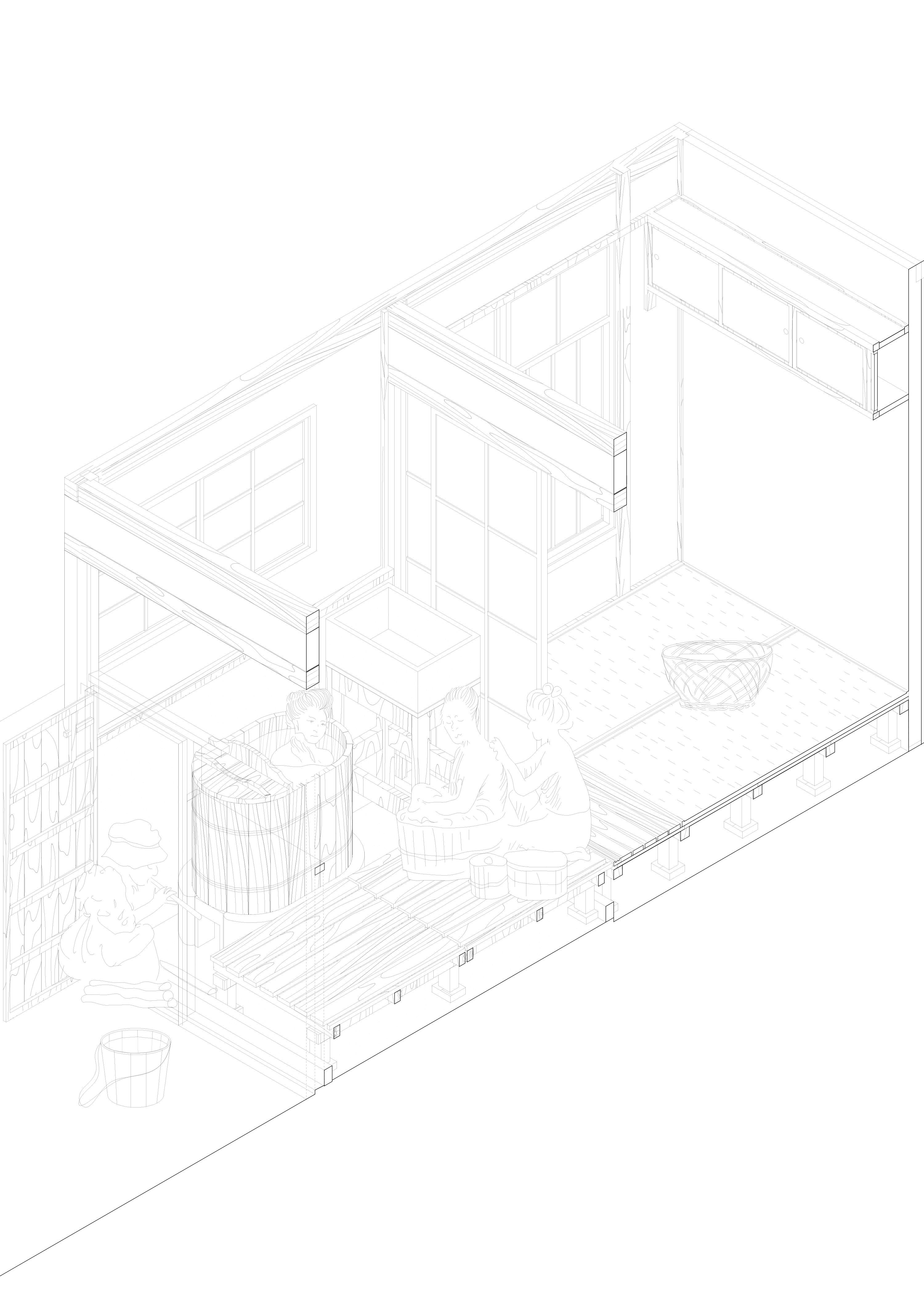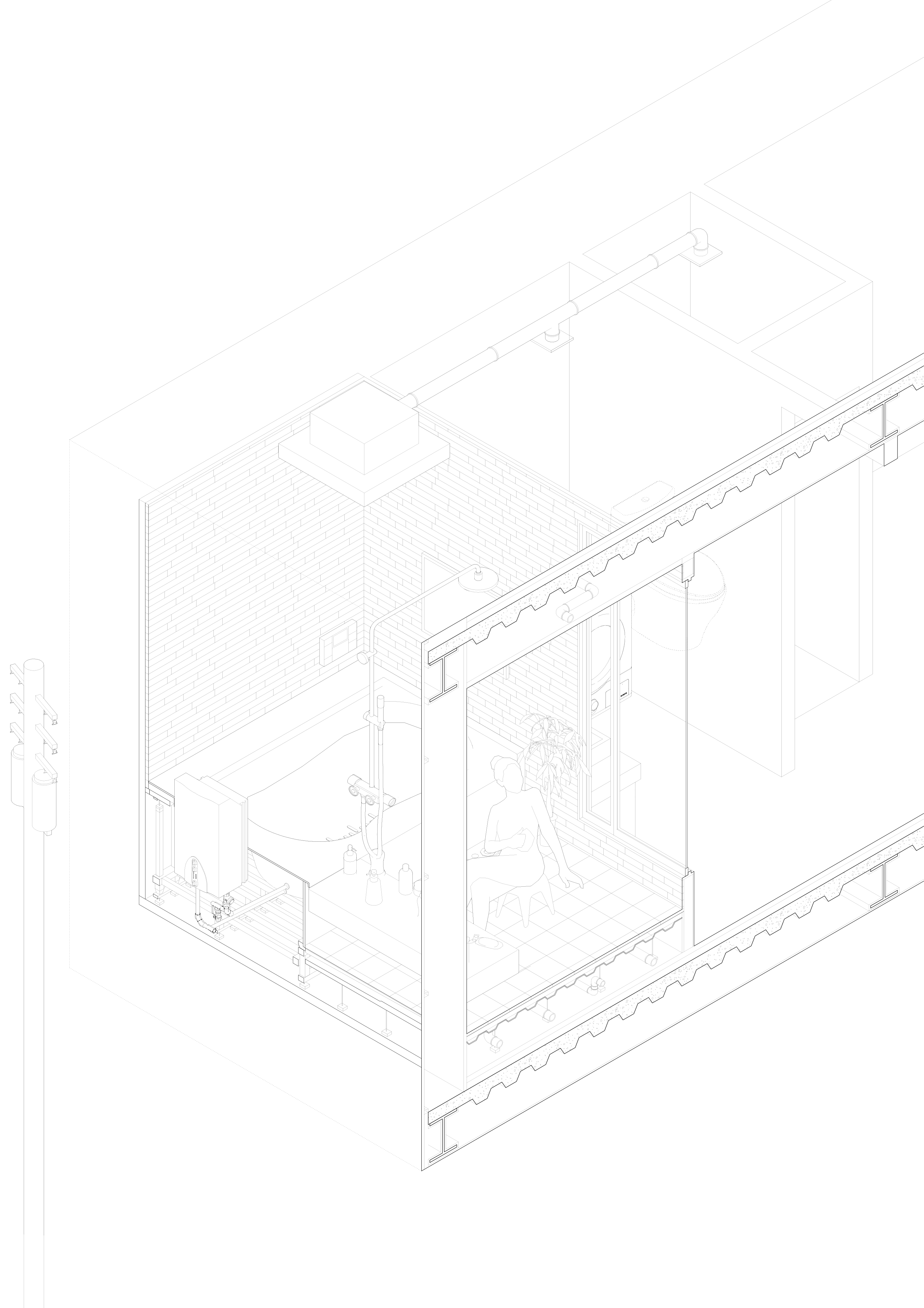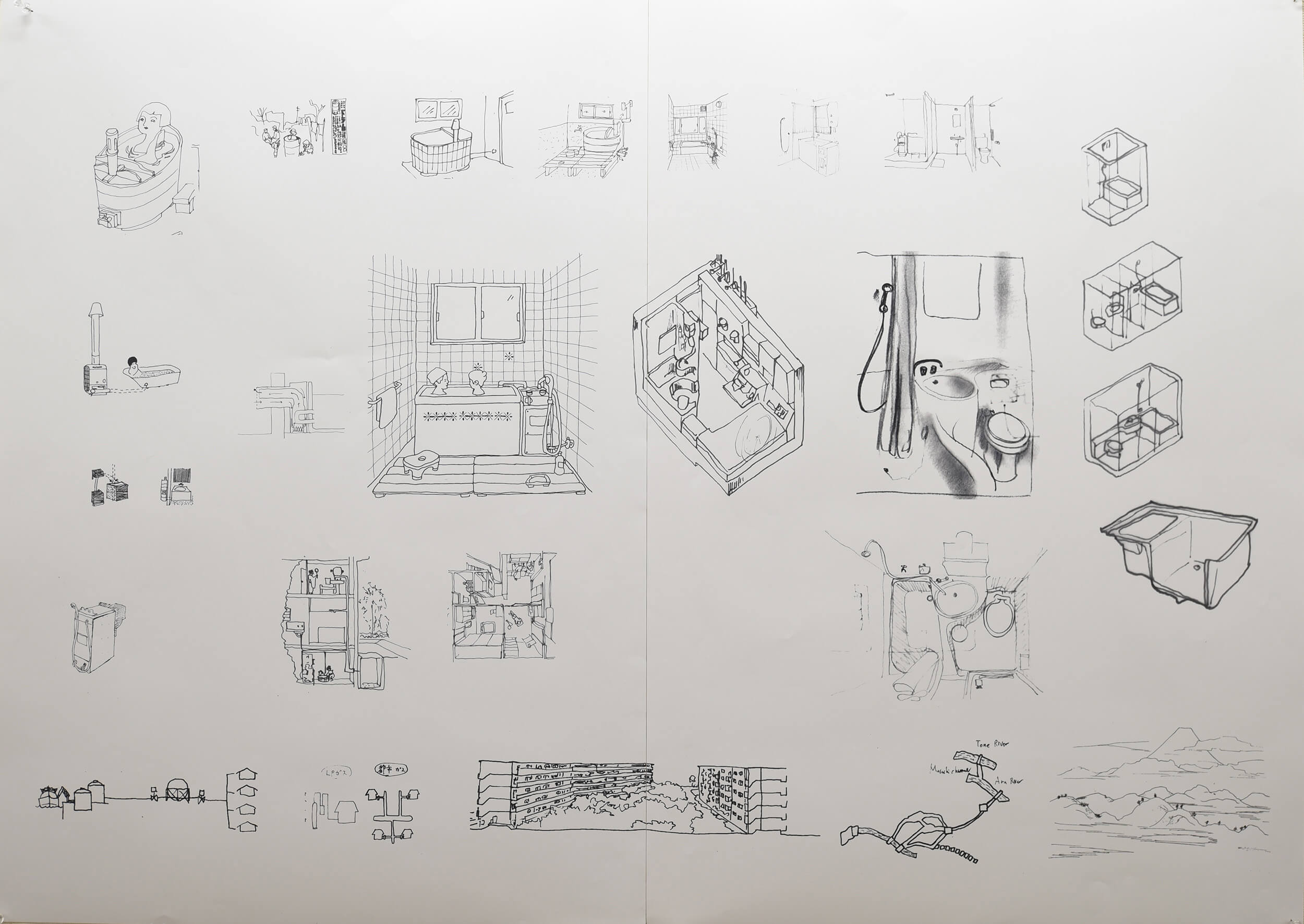The research follows the transformation of the Japanese bath over the last 150 years from a set of portable objects – each designed for its respective distinct purpose yet not bound to a particular space – to a bathroom integrating the different elements into a whole unit, including the surfaces of the ceiling, the walls and the floors, as well as the hidden installations for water supply, water heating, sewage disposal, driers, lighting, and so on.
Originating as a service reserved to a privileged few – where the water was brought from the well by a servant, while another servant was responsible for heating it, preparing the bath and maintaining the right temperature – more so than with other devices and spaces in Japan, the history of the private bath is closely linked to social emancipation. In the post-war years the equipment of apartments with baths, facilitated by compact and safe gas-water-heaters, became a symbol of improvements in quality of life under the welfare state, while in more recent years the fully-equipped bath has more and more become a highly technological space of contemporary comfort and body-care, its surfaces imitating wood and tiles and thus, via associations, continuing to establish relationship to its origins, albeit an indefinite one.
Bath









Project
Students
Teacher
Class
Type
Year
Bath
Kiyoto HirokiOleksandra LebidXiaoyue Liu
Laurent Stalder
Thing of Modernity – Mapping the Micro-geography of Everyday Environments
–
2020 4Q